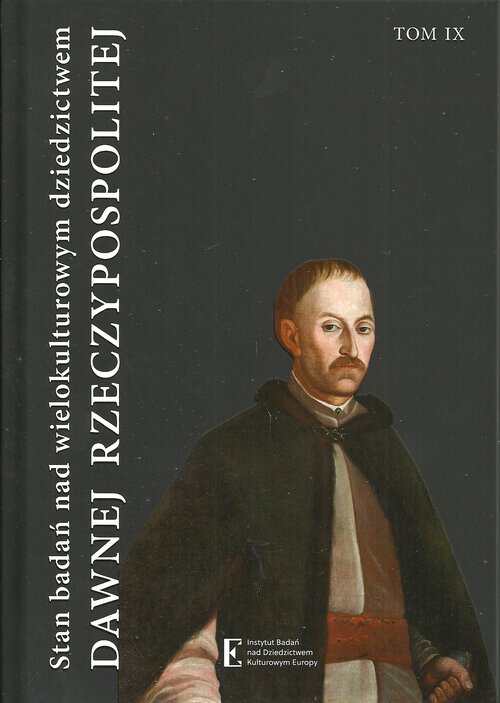TECHNIKA I TECHNOLOGIA XVIII-WIECZNEGO PORTRETU STAROPOLSKIEGO NA PRZYKŁADZIE IMAGINACYJNEGO PORTRETU LEONA TYSZKIEWICZA, KASZTELANA LUBELSKIEGO, Z KOLEKCJI RODOWEJ Z ŁOHOJSKA ZE ZBIORÓW MUZEUM NARODOWEGO W WARSZAWIE
Techniques and Technologies of 18th-Century Old Polish
Portraits Illustrated with the Example of Imaginary Portrait
of Leo Tyszkiewicz the Castellan of Lublin from the Lohoysk
Family Collection Kept in the National Museum in Warsaw
Author(s): Aleksandra Krupska, Joanna Szpor, Anna Paulina Orłowska
Subject(s): History
Published by: Instytut Badań nad Dziedzictwem Kulturowym Europy
Summary/Abstract: When developing and carrying out the necessary conservation of works ofart, it is very important to properly recognize the technique and technology ofits production. This is vital in order to make the accurate diagnosis of the stateof preservation, determine the causes of damage, and rationally select materialsnecessary for conservation and restoration works.It is very rarely possible to carry out the analysis and conservation ofpictures from a single collection, perhaps mostly painted by the same artist,which have not been subject to aggressive renovation before and do not bearexcessive secondary influences. But 18th-century imaginary portraits of theTyszkiewicz family from the Lohoysk collection, directly connected with theSarmatian culture, meet these conditions. They are characterized by a similarway of painting and a similar pattern of figure presentation, including decorativerepresentation of rich noble outfits and necessary army attributes (kanjars,sabers, hetman’s batons etc.). The portraits were meant to prove the high socialstanding and services of the ancestors of Tyszkiewicz family. The authorsof the portraits were probably anonymous provincial guild painters of the 18thcentury, who applied old principles of painting.It was very important to recognize how the portrait of Leo Tyszkiewicz waspainted, what was the order of applying composition elements, to recognizethe kinds of paint, their cover intensity connected with different pigments andbinders, to determine color layers, etc.Analytical, physical and chemical tests, as well as insightful visual analysis,made it possible to learn in detail the technical and technological structure ofthe portrait of Leo Tyszkiewicz, beginning with the technical and technologicalfeatures of the canvas support, through color layers, up to the top varnishlayer. Physical examinations such as X-ray, UV, IR, and highly specialist chemicaltests of binders and pigments (GC-MS, FTIR, SEM-EDS), as well as theanalysis of lateral sections of the collected samples of layers of paint, made itpossible to characterize the technological materials used in the picture. Thisallowed to try and describe the way of painting this representation against thebackground of 18th-century European painting technologies and to draw conclusionsconcerning the causes of specific deformations present in the pictures.
Book: Stan badań nad wielokulturowym dziedzictwem dawnej Rzeczypospolitej
- Page Range: 17-41
- Page Count: 25
- Publication Year: 2017
- Language: Polish
- Content File-PDF

